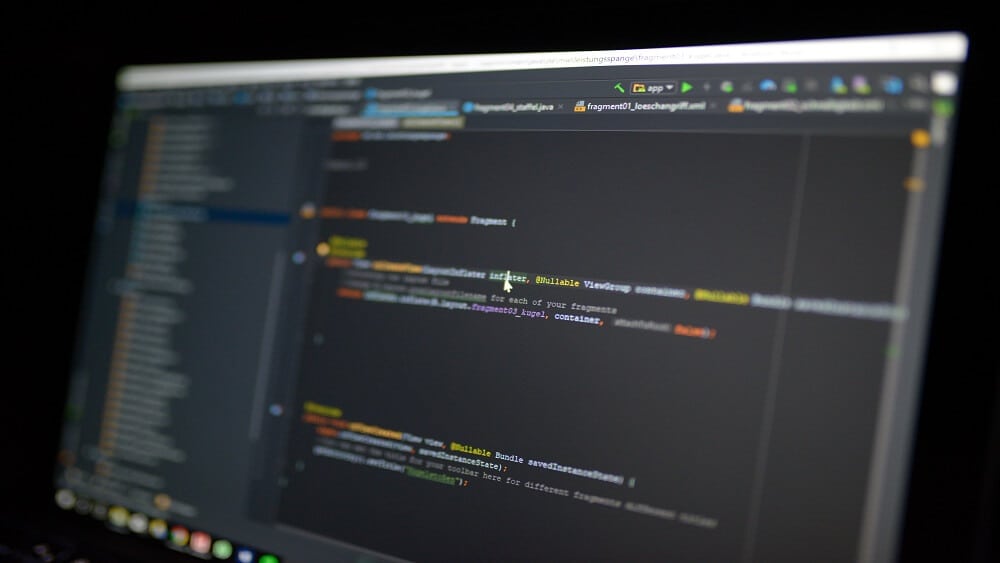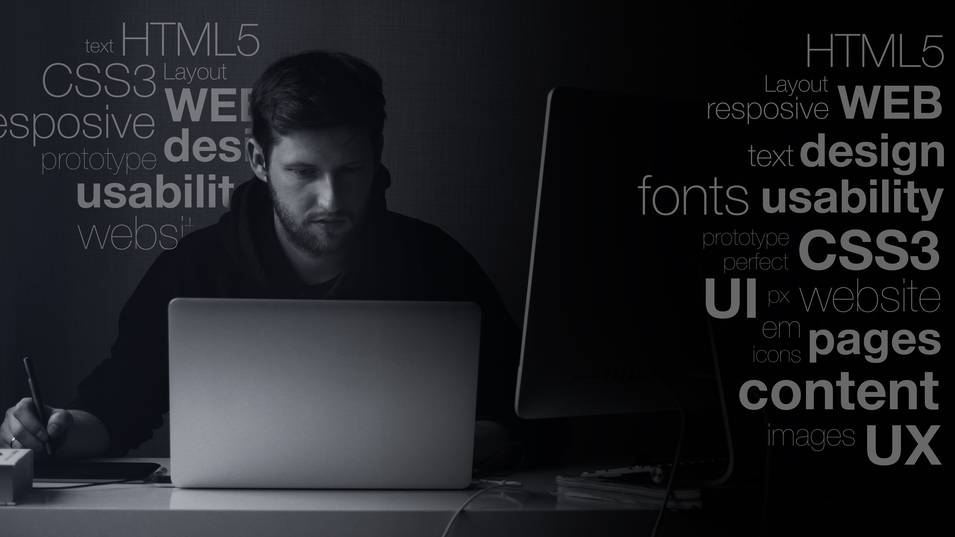Hi there, welcome to an interesting and informative read on how to become a Full Stack Developer!
This article discusses the steps, skills, and tips you need to become a Full Stack Web Developer.
At the end of this read, you’ll know how to become a Full Stack Developer with no experience.
We’ll focus on the following issues:
- How to become a Full Stack Developer from scratch
- Essential Full Stack Developer skills
- Why you should learn Full Stack Development
- Software for building web apps
Comfortably sit as you read this Full Stack Developer roadmap!
Overview of Full Stack Web Developer

Many people feel overwhelmed searching for “how to become a Full Stack Developer for free” due to the alien tech jargon that pops up.
MySQL, CSS, PHP, JS, Reactjs, and HTML are some of the common results.

Don’t be overwhelmed because this article has solved this problem; you’ll learn how to become a Freelance Full Stack Developer in a simple language.
Full Stack Developers are versatile Programmers who can fit perfectly into any aspect of Web Development.
Flush out every wrong pre-determined thought on learning how to become a Stack Web Developer because it’s a very simple process.
An ideal Full Stack Developer aptly understands Front-End and Back-End Development.
So, how do you learn Full Stack Development?
Steps to Become a Full-Stack Developer

If you’re a coding enthusiast and dream of becoming a Full Stack Web Developer someday, this segment is for you.
Below is how to become a Full Stack Web Developer easily:
Step 1: Know Your Experience Level
Your past educational qualifications and experience will count here; they’ll dictate where you start from.
For instance, an individual with advanced technical know-how in programming will do better than an amateur.
An amateur must be patient, hardworking, and diligent in mastering full stack programming.
However, a dexterous Front-End or Back-End Developer will find the journey easy.
You must clearly define your experience level to know the best Full Stack Developer learning path to take.
Be truthful to yourself to know the best Full Stack Developer course to register for.
Step 2: Define Your Goal
“Why do I want to be a Full Stack Developer?”
An answer will help you streamline your learning options.
The common reasons why people want to become Full Stack Developers include:
- To build a career and work for their dream company
- To serve as a consultant to other firms
- To build apps for themselves
- To be a Freelance Programmer
Defining your interests will help you select the best tools and technologies for a Full Stack Development Career
Step 3: Familiarize Yourself with the Right Full Stack Development Tools
You need the following essential tools for Full Stack Developer training:
Computer and Operating System
Every Full Stack Developer needs a computer and an operating system for programming.
These tools are indispensable to your programming journey.
Text Editor
This tool allows you to enter, edit, and save texts on your system.
Text editors are embedded in operating systems and software packages.
Developers use text editors to modify codes of programming languages.
Browser
You can use a browser to troubleshoot problems encountered during Full Stack Web Development.
Most Software Developers use Firefox and Chrome browsers for troubleshooting.
Terminal
Full Stack Software Engineers use terminals to bolster their efficiency.
It’s the interface to the console where Developers implement text-based commands.
While a terminal allows Developers to implement commands, you can’t access source codes through it.
Examples include iTerm, PowerShell, Zsh, and Git Bash.
Other Full Stack Development toolkits you should familiarize yourself with include back-end tools, front-end tools, and other maintenance tools.
Front-End Tools
Below are the seven common front-end tools:
Bootstrap
Bootstraps are open-source frameworks with design templates for typography, navigation, and buttons for Web Development.

Bootstrap gives you multiple fonts, layouts, and colors to select from.
This tool is unique with the uniform appearance of every feature across browsers.
Angular.js
Google is the brain behind Angular.js.
This tool permits the expression of web applications’ features through HTML templates and syntax.
Foundation
It’s a CSS framework adopted to enable responsive user interfaces.
Foundation contains every pattern needed to build a responsive app or website.
Foundation is an open-source framework that is available on Github.
Python
This front-end tool is a versatile programming language.
Python works perfectly for beginners who assist in object-oriented and functional programming.
It’s based on code readability.
JavaScript
This programming language helps with prototype-inclined object orientations.
Developers use JavaScript to build interactive web pages for every device.
Elixir
It’s a programming tool on Erlang VM.
Developers use it to maintain and scale web applications.
CSS and HTML
These programming languages constitute the foundational blocks of Full Stack Web Development.
Full Stack Developers often need CSS and HTML for Front-End Development irrespective of the frameworks or back-end languages they use.
If you want to understand how front-end technologies work, focus on learning the following:
- HTML5 for doctype, attributes, and semantic elements
- CSS Flexbox and Grid building columns and alignment
- CSS fundamentals for fonts, colors, and positioning
Back-End Tools
Our discourse on how to learn Full Stack Web Development is incomplete without highlighting the back-end tools you need to build web pages.
These five tools are essential to your career development:
Django
This Back-End Development Tool is a Python-inclined framework for web server scripting.
Django propels fast execution and pragmatic web design.
Ember.js
Most Full Stack Web Developers use Ember.js to build classic web applications.
Developers also use this JavaScript framework to create desktop and mobile apps.
Lodash
This programming language is a JavaScript library used for functional programming.
Developers use Lodash to write short and maintainable codes.
React
This tool is another JavaScript library used for creating mobile and single-page apps.
D3.js
Web Developers use this tool to build exceptional data-centered visualizations for web browsers.
D3 helps Full Stack Developers to control visuals.
Package Managers
Developers use this tool to build project contexts and bring in external dependencies.
This tool helps you to package and publish your product.
It makes your product easily visible to others; it helps you to specify a project’s name, dependencies, version, and keywords.
Databases
Most applications require one or two databases for data storage.
The most common databases Full Stack Software Engineers use include NoSQL, Cache, Lightweight, Cloud, and Relational databases.
Step 4: Work on Your Deployment Skills
After gathering your tools, understand how to implement the Front-End Development on the internet.
The development process is complete at this stage, and you’ve test-run the website.
The next step is to send the product to a live web server.

Mastery of deployment skills will ensure you don’t lose an asset.
Follow these steps for a successful deployment:
- Register your domain
- Activate your hosting plan
- Create DNS records
- Create an assessment of the production segment
- Create emails
- Create back up for the existing site, and you’re ready to go live
Step 5: Carefully Choose Your Learning Program
What does your schedule look like?
Do your present schedule permit full- or part-time studies?
For instance, an individual with family responsibilities and a demanding full-time position may consider enrolling in a part-time Full-Stack Web Development Course.
Full-time programs usually last for three months, while part-time programs span six months and one year.
Full-Time Programs
A three-month intensive learning session is highly rewarding for motivated learners.
Such learners are typically educationally qualified, industry experts.
They have advanced knowledge of Web Development and coding.
Some of them have already acquired a degree in computer science.
The three-month programs enlighten learners on the essential skill sets and prepare them for the job market demands.
Coding enthusiasts with some level of mastery should also participate in these rigorous training programs or a Bootcamp to enhance their development skills.
Bootcamps are more flexible and affordable than conventional degree programs.
Part-Time Programs
Part-time coding Bootcamps are ideal for busy IT experts who want to build on their Web Development Skills.
Your choice, of course, determines the price.
However, you can get free part-time courses online, but you may not get the desired quality.
Participating in a program without an assurance of getting reliable results is equivalent to a waste of time.
Degree Programs
Our discourse on how to become a Full Stack Web Developer is incomplete without mentioning one of the most common paths: a four-year degree program.
The Stack Overflow 2020 report shows that about three-quarters of Developers globally have a minimum of a Bachelor’s degree.
Enrolling in degree programs has many benefits; you receive a comprehensive education that sets you apart from the crowd.
You also build invaluable relationships, get internship opportunities, and create exceptional portfolios during your degree program.
Employers usually consider experts with degrees for Developer jobs ahead of others.
However, you must be disciplined and financially committed to completing a degree program.
College is ideal for coding enthusiasts who just completed their high school diploma and want to gain extensive theoretical and practical knowledge of Web Development.
If you want to pursue a degree along this line, consider Web Development or Computer Science.
Tutorials and Books
If you don’t fancy formal courses, you can learn how to become a Full Stack Web Developer through books and tutorials.
In a 2020 survey by Stack Overflow, 16% of respondents didn’t see the importance of formal education in Web Development.
However, you must be passionate and highly disciplined to succeed in self-directed learning.
You may also face some form of stigmatization because many employers don’t consider self-directed experts for Developer Jobs.
But at a point in your development journey, you must practice self-directed learning.
Below are some books on how to become a Full Stack Web Developer that can read:
- The Full Stack Developer by Chris Northwood
- Eloquent JavaScript by Marjin Haverbeke
- ASP.NET Core 3 and Angular 9 by Valerio De Sanctis
- Full Stack React Projects by Shama Hoque
Step 6: Build Projects on Your Own
Applied learning is the best way to guarantee retention.
Analyze what you’ve learned and practice things on your own.
Start with simple projects in your study materials or even execute open-source projects through a volunteering system.
Collaborate with other Full Stack Developers to make your portfolio more valuable.
If you’ve not built any project yourself, there’s no evidence you’re a Developer.
Ensure you build an endearing portfolio that will make your applications irresistible to employers.

Your portfolios give potential employers an impression of your abilities.
Show off screenshots of your project, the role you played in it, and the technologies deployed.
Your project should showcase excellent technical know-how and attention to detail.
Publish your code on version control systems such as Github to give it more visibility.
You can also add ongoing projects to your portfolio.
Anyone who downplays a portfolio’s impact doesn’t know how to become a Full Stack Web Developer.
Step 7: Be Committed to Professional Networking
Bootcamps allow you to expand your professional reach; you meet people with the same worldviews and professional aspirations.
Build relationships with them because they can eventually turn out as referrals or career mentors.
You can also join Full Stack Web Developers’ communities or groups on LinkedIn and other social media platforms to learn from and interact with experienced Developers.
The communities can help you solve issues and give great insights into the field.
Do your job hunting appropriately and perform excellently in interviews to increase your chances of employment.
Top 10 Full-Stack Developer Skills You Need for a Fruitful Career

You should comprehensively understand every development skill before calling yourself a Full Stack Developer.
An ideal Full Stack Web Developer knows how to use frameworks and libraries, demonstrate expertise in non-negotiable skills, and code effortlessly.
If you want to master how to learn Full Stack Development in the IT world, focus on these skills:
Front-End Languages (CSS/HTML)
CSS and HTML are the foundation of a webpage’s appearance and quality.
HTML structures web pages while CSS defines their visual aspects.
You must be skillful in deploying these languages to build exceptional web applications.
Back-End Languages
You define the logic and functionality of web apps with back-end languages.
There are numerous back-end technologies available to Full Stack Developers.
The essential back-end languages for a Developer are Python, Ruby on Rails, and PHP.
These tools are more error-tolerant, versatile, and simple to use.
Ruby on Rails has different frameworks and libraries and a smooth learning curve.
The popular firms using these tools include Scribd, TaskRabbit, and Airbnb.
JavaScript
JavaScript combines front and back-end techs in project development.
Developers use this programming language to build websites, games, presentations, and mobile applications for Linux and ios.
Design Skills
An ideal Full Stack Developer should be skilled in graphic design; you must know how to design prototypes.
Though you don’t have to be a professional designer, understanding the basics will reduce your overdependence on Designers.
Exceptional Developers have basic knowledge of Figma, Sketch, and Photoshop.
Database Management Skills
All software requires at least one database for data storage to help you access them later.
Hence, a Developer must understand data structures and how to manipulate databases.

You must be good at relational databases and skilled in database management.
The most common databases in Full Stack Development include SQLServer, Oracle, MongoDB, and Redis.
Understanding of Web Architecture
A Developer should comprehensively understand web architecture.
Developing an app is a sophisticated process involving different computational skills.
You must be creative and understand algorithms.
A good Developer should know how to store data in databases, structure tools, and locate tasks.
You should also know how to structure codes and separate files.
Full Stack Developers who extensively understand web architecture are efficient, secure, reliable, and scalable.
Sourcetree and Git
Developers use source or version control systems to track and manage adjustments made to code.
Version control tools such as Git and SourceTree enhance Developers’ work.
NPM
NPM is a straightforward package manager that Developers use to manage local dependencies.
NPM helps Developers automatically update their packages and install needed dependencies in all commands.
Soft Skills
Asides from technical skills, you need the following soft skills for a fruitful career:
- Leadership skills
- Creativity
- Attention to detail
- Problem-solving skills
- Analytical skills
- Patience
- Effective communication skills
REST and HTTP
REST and HTTP are different important tools for Full Stack Development.
Developers use HTTP for data exchange and fetching HTML documents.
It enhances the improved performance of an app.
On the other hand, REST is an interface for gathering data in the most usual manner.
It ensures users’ flexibility.
Software Stacks You Need to Become a Full Stack Developer

A software stack is the collection of elements an app or website needs for smooth operation.
It comprises database software, server, programming language, and an operating system.
Full Stack Developers have an array of dedicated stacks for different projects.
Front-End Development stacks include VCS, caching tools, package managers, build systems, libraries, testing tools, and frameworks.
On the other hand, Back-End Development stacks entail Application Programming Interfaces (APIs), caching mechanisms, search engines, DevOps, and containerization tools.
Below are the three most commonly used stacks:
LAMP Stack
This stack is open-source software used for building applications and websites.
LAMP represents Linux OS, Apache, MySQL, and PHP.
It’s the foundation of every site Linux hosts.
You can install LAMP with Tasksel.
LAMP stack is stable and secure to its large community of users.
LAMP stack’s components are free and easily customizable.
MEAN Stack
MEAN represents MongoDB, ExpressJS, AngularJS, and Node.js.
MEAN is a mixture of JavaScript-inclined techs, and many refer to it as the conventional JavaScript stack.
MEAN stack architecture makes it easy to build JavaScript web applications and websites.
MongoDB serves as the document database, while Express is the web framework.
Node.js is the JS server.
Express makes handling and routing HTTP requests easy, while Angular ensures the seamless creation of HTML web pages.
MEAN stack is ideal for building Node.js apps.
MERN Stack
This stack is a variant of the MEAN stack.
MERN means MongoDB Express React Node, the four essential techs that enhance stack workability.

This stack is ideal for developing exceptional web interfaces.
You should use this stack because of its versatility.
Tips to Becoming a Full Stack Developer

Follow these tips to become a sought-after Full Stack Developer:
Choose a Niche
Although Full Stack Developers are known for their versatility, it’s better to be known for an area of strength.
For example, you may specialize in JavaScript.
It means you’ll extensively understand everything relating to JS.
Understand Front-End Technology Basics
Ensure you have a strong foundational knowledge of Full Stack Web Development.
You must specifically understand front-end tech because it defines the user experience.
You should know the functionality of Front-End Frameworks such as AngularJS, JQuery, SASS, and LESS.
An ideal Developer must also understand how technologies such as JS, CSS3, and HTML5 work.
Master Programming Languages
Though you can’t understand every programming language in the field due to its vastness, learn the essential ones such as Python, Ruby, and PHP.
But you should also learn the syntax and grammar of other languages.
You should also know the following:
- Learn design basics to avoid over-dependence on designers
- Learn the use of development frameworks
- Understand the use of database
Conclusion

Full Stack Development is currently the most lucrative profession in the IT sector.
It stands out in every important factor; yearly wage raises, career growth, job reputation, and worker demand.
Enroll in the right training program if you want to become an exceptional Full Stack Developer.
The best Full Stack Web Development Course should be project-based.
It must also discuss every in-demand skill, including Vue and Flask.
Join great online communities to learn from experts and strategically position yourself for growth.
If things don’t go as planned for the first few weeks, push harder and stay committed to your passion.
FAQs

What is Full Stack Development?
It’s building the front-end and back-end of a website or web app.
The front-end caters to the client-side; it aims to create a great user experience. The back-end centers on the server-side of an app; it’s where the behind-the-scene technical tasks occur.
What is a Full Stack Developer?
A Full Stack Developer is a trained Web Programmer who understands front-end and back-end technologies.
They’re also thoroughbreds in web architecture.
Full Stack Developers create relational databases and modify codes through software and hardware.
They build servers and test bugs to identify inconsistencies.
Can I become a Full Stack Developer without a degree?
You can join a boot camp and participate in three to six months of intensive coaching.
You can take courses on Udemy, Coursera, or FreeCodeCamp.
You can buy books and engage in self-directed learning with online tutorials.
You can also engage in short specialized training programs.
How hard is it to become a Full Stack Developer?
Becoming a Full Stack Developer is not hard if you’re passionate about Coding and Web Development.
You need a few months of intensive learning in a Bootcamp to understand full stack development.
However, you must be attentive to details and calculative to understand complex coding.
How long does it take to become a Full Stack Developer?
It depends on the route you want to take and your experience level.
However, Full Stack Development training typically takes three to six months of extensive teaching and practice.
But you’ll spend 4 years if you enroll in a degree program.
What is needed to become a Full Stack Developer?
You need commitment, time, and discipline to learn.
You must be versatile in coding and understand programming languages.
You should know how front and back-end developments work.
Developers must also know how to use software stacks to build projects.









